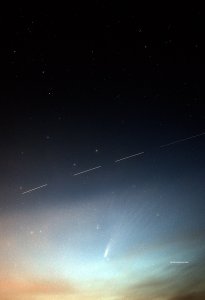🌌🔭🦛 I’ve submitted some of my Astrophotography images to the International Dark Sky Society "Capture the Dark" photo contest, and public voting is now open! I’d be grateful if you checked out my entries. Note that there isn't a single page for all entries; you have to visit each page separately. If any speak to you, please cast a vote! 🗳️☄️
ISS, NEOWISE, and Big Dipper
When I saw that Comet NEOWISE would be low in my northern sky before sunset, superimposed upon the Big Dipper, I was excited to take an image. When I learned that the International Space Station would be transiting the Comet at the same time - I was "over the Moon" with excitement! This is four sequential 10 second images with a 2 second pause in between to let the camera settle. A once-in-a-million year juxtaposition only possible with the dark skies that I'm blessed with where I live!
Light pollution while trying to capture the aurora
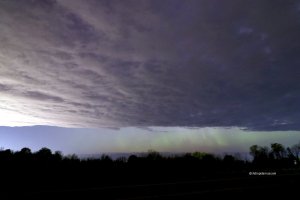 Category: The Impact of Light Pollution
Category: The Impact of Light Pollution
In May of 2024, a massive solar storm created major displays of the Northern Lights in areas that normally do not see them. I set out to capture images of these displays but was stymied by the massive amount of light reflected off the bottoms of the clouds from the nearby city of Rochester, the outskirts of which were 15 miles away from where I took this picture. I never did get the "perfect shot" that night; the longer exposures required to capture the aurora were ruined by the massive light pollution from the city.
The Allegro Papagayo resort, Costa Rica
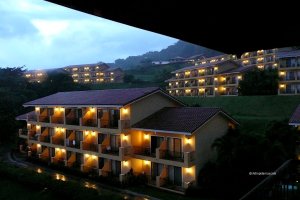 Category: Dark Sky Friendly Lighting/Design
Category: Dark Sky Friendly Lighting/Design
Demonstrating their commitment to dark sky friendly lighting, the Allegro Papagayo resort in Guanacaste, Costa Rica implemented downward-facing low-intensity shielded light fixtures, amber colored bulbs, overhanding roofs, and limits on pathway lighting and exterior lighting to bring together security, safety, and the ability to gaze upwards at the beautiful dark skies of the Pacific Ocean.
Strangers coming together to enjoy the Northern Lights, October 2024
In October of 2024, a powerful solar storm created dazzling displays of Northern Lights, including for many people well south of where the phenomenon usually occurs. This six-image panorama was taken from the southern dark sky shores of Lake Ontario, looking north, as the aurora danced across the sky and created Nature's most powerful light show so bright that people were literally reading books by it. Strangers became friends, with everyone enjoying the moment, smiling, and laughing, while the pale glow of their cell phones were overpowered by the amazing beauty. What a night!
The Full Moon behind Dogwood Trees
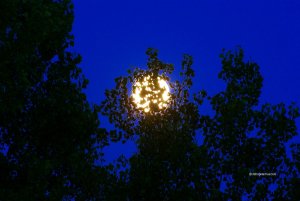 Category: Creatures of the Night [flora]
Category: Creatures of the Night [flora]
This image of the full moon glowing through the leaves of a dogwood tree beautifully captures the connection between night sky and Earth. The moonlight transforms the foliage into a delicate silhouette, revealing nature's quiet presence after dark. It's a peaceful moment that highlights how moonlight shapes the behavior and beauty of nighttime flora. A candidate for the "Night Flora and Fauna" category, this photo celebrates the subtle, often overlooked ways natural light interacts with the living world when skies remain free from artificial intrusion.
Sh2-157 - Lobster Claw Nebula with stars removed
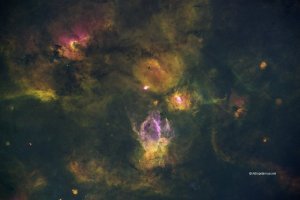 Category: Deep Sky Observations
Category: Deep Sky Observations
Sh2-157, the Lobster Claw Nebula, is an emission nebula in Cassiopeia known for its distinctive arc shape and vivid colors. Its mix of glowing gas, dark dust lanes, and embedded stars makes it both scientifically intriguing and visually striking. Even with amateur equipment, its fine details emerge under dark skies, showcasing the power of careful imaging and sky preservation. This target is a strong candidate for the "Deep Sky Observations" category, highlighting the beauty of our universe and the importance of protecting the night.
The Elephant's Trunk Nebula (IC 1396A)
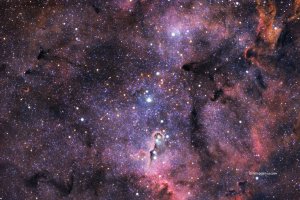 Category: Deep Sky Observations
Category: Deep Sky Observations
The Elephant's Trunk Nebula (IC 1396A) is a striking column of gas and dust set within the glowing IC 1396 region in Cepheus. Its dramatic shape, color contrast, and star-forming detail make it a favorite for deep-sky imaging. Capturing this target with amateur equipment highlights both its accessibility and the stunning results made possible by dark skies. Its fine structure and dynamic composition make it an ideal submission for the International Dark Sky Society's "Deep Sky Observations" category; blending science, beauty, and the importance of preserving our night skies.
Caroline's Rose Cluster (NGC 7789)
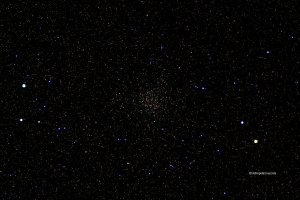 Category: Deep Sky Observations
Category: Deep Sky Observations
NGC 7789, or Caroline's Rose, is an open star cluster in Cassiopeia that reveals the rich structure of our galaxy. Its dense, petal-like star patterns create a stunning visual, perfect for showcasing deep-sky imaging skill. Captured with amateur equipment, it highlights both accessibility and the beauty made possible by dark-sky preservation. Under pristine skies, its fine details emerge, making it a strong candidate for the "Deep Sky Observations" category. It’s a vivid blend of science, artistry, and the importance of protecting our night skies.
